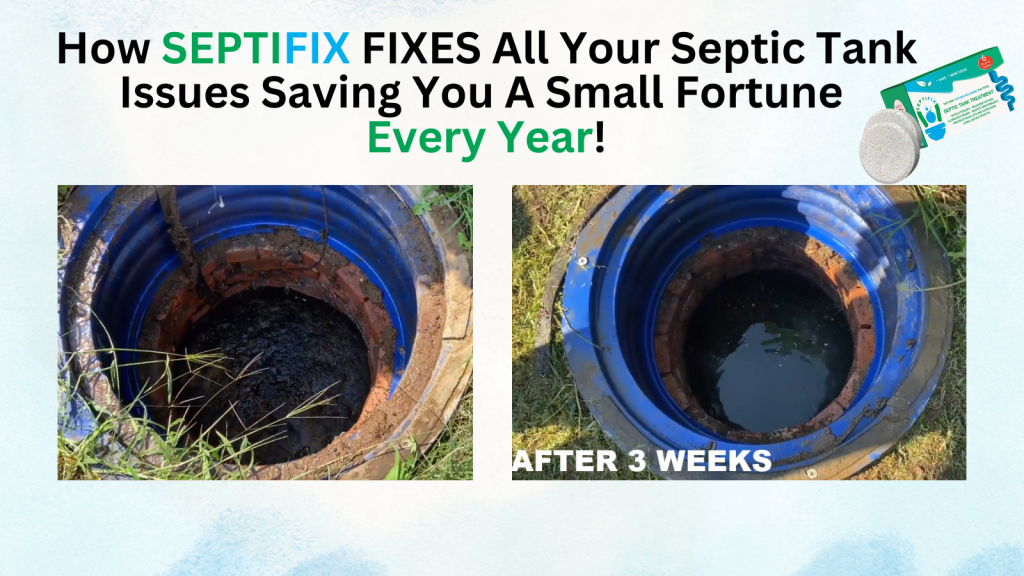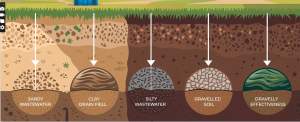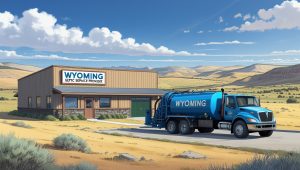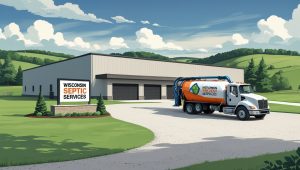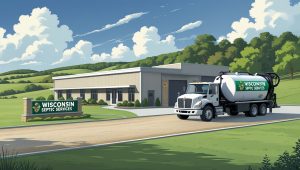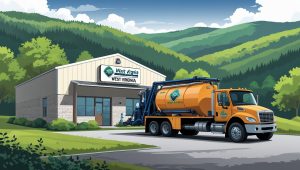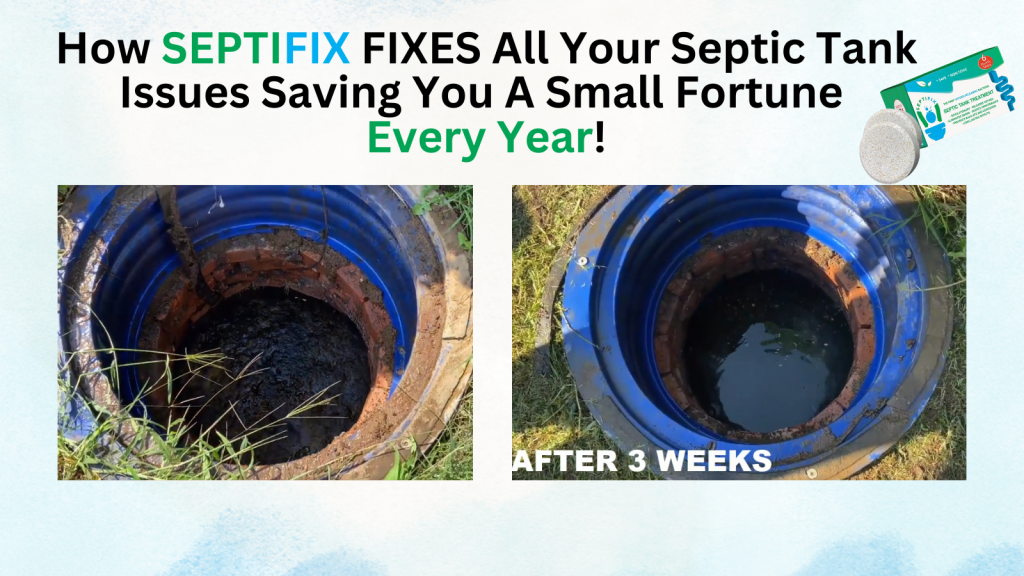Mountain septic systems face unique challenges due to altitude, rocky terrain, and extreme weather conditions. These factors can significantly impact system efficiency and longevity. Proper planning, installation, and maintenance are essential to ensure these systems function effectively in challenging environments. This article explores the unique considerations for mountain septic systems and provides practical solutions for addressing these challenges.
Table of Contents
- The Impact of Altitude on Septic Systems
- The Challenge of Rocky Terrain
- Seasonal Challenges in Mountain Septic Systems
- Best Practices for Mountain Septic System Maintenance
- Environmental Regulations for Mountain Septic Systems
- Septifix
- Septic Permit Links by State
The Impact of Altitude on Septic Systems
Altitude plays a crucial role in the efficiency of septic systems. Higher elevations often result in lower oxygen levels, colder temperatures, and reduced atmospheric pressure, all of which can hinder the natural processes within a septic system. These environmental factors directly affect bacterial activity, system performance, and the overall longevity of the septic setup.
How Altitude Affects Bacterial Activity
Bacteria play a critical role in breaking down waste in septic tanks. At higher altitudes, the lower oxygen levels and colder temperatures can significantly slow bacterial activity. Reduced bacterial efficiency means waste decomposes more slowly, increasing the risk of solids building up in the tank. As a result, septic tanks in mountainous regions may require more frequent pumping and maintenance.
Temperature Fluctuations and System Performance
Mountainous regions often experience significant temperature swings between day and night, as well as seasonal extremes. These temperature fluctuations can disrupt the consistent bacterial activity required for optimal waste breakdown. Freezing temperatures, in particular, pose a risk of frozen pipes, slow waste digestion, and blockages in the system.
Atmospheric Pressure and Waste Breakdown
Lower atmospheric pressure at higher elevations can reduce the efficiency of anaerobic digestion within septic systems. This process relies on stable environmental conditions to break down organic waste effectively. At altitude, reduced pressure can lead to incomplete digestion and lingering odors.
Solutions for Altitude Challenges
To address these altitude-related challenges, homeowners and installers can implement several strategies:
- Insulation: Proper insulation of septic tanks and pipes helps maintain stable internal temperatures, reducing the risk of freezing and bacterial disruption.
- Aerobic Treatment Systems: These systems introduce oxygen into the septic tank, enhancing bacterial activity even in low-oxygen environments.
- Frequent Inspections: Regular check-ups help identify issues early, preventing potential system failures.
- System Design Adjustments: In high-altitude areas, septic systems may need custom designs to address altitude-specific challenges, such as improved ventilation and enhanced bacterial treatment zones.
By taking these measures, property owners can improve the performance, reliability, and longevity of their septic systems in high-altitude environments.
The Challenge of Rocky Terrain
Rocky soil is a common challenge in mountainous regions. It can make excavation difficult and limit the ability of the soil to absorb and filter wastewater effectively. Poor soil drainage can lead to backups, contamination of nearby water sources, and even system failure.
Soil Permeability and Drainage Limitations
In rocky environments, natural soil permeability is often compromised. Traditional septic drain fields rely on porous soil to filter and absorb wastewater, but rocky terrain can restrict the flow of effluent. When wastewater cannot be properly absorbed, it can pool on the surface or run off into nearby water sources, causing environmental and health hazards.
Excavation Challenges
Excavating in rocky soil can be time-consuming, labor-intensive, and costly. Large rocks and uneven terrain may require specialized equipment and professional expertise to create a proper installation site for septic systems. Additionally, rocky ground can make it challenging to achieve the necessary slope for proper drainage.
Design Adaptations for Rocky Terrain
- Mound Systems: These raised drain fields are built above ground, allowing wastewater to be treated in engineered soil layers.
- Engineered Drain Fields: Specialized drainage systems, including gravel or sand-based filters, can improve wastewater absorption and treatment.
- Effluent Filters: Installing effluent filters helps prevent solids from entering the drain field, reducing the risk of clogs and system failures.
- Advanced Treatment Units (ATUs): These systems provide enhanced filtration and pre-treatment before wastewater reaches the drain field.
To address these challenges, septic system designs in rocky areas often require innovative solutions:
Site Evaluation and Planning
Proper site evaluation is crucial when dealing with rocky terrain. Professionals should assess soil composition, drainage capacity, and potential risks before system installation. In some cases, property owners may need to consult with geotechnical engineers to design systems that meet environmental regulations and site-specific requirements.
Preventing System Overload
In areas with rocky soil, septic systems are more prone to overloading due to limited drainage capacity. Homeowners should:
- Use water-saving fixtures to reduce wastewater volume.
- Space out heavy water usage, such as laundry and dishwashing.
- Schedule regular maintenance to detect and address drainage issues early.
By adopting these design and maintenance strategies, property owners can effectively address the challenges posed by rocky terrain and ensure long-lasting septic system performance.
Seasonal Challenges in Mountain Septic Systems
Mountain climates often experience harsh winters, which can lead to freezing septic components. Snowmelt in spring can also oversaturate the ground, reducing the efficiency of the drain field.
Preventive Measures for Winter Maintenance
- Insulate exposed pipes and tank covers.
- Use septic-safe antifreeze solutions.
- Schedule maintenance before winter arrives to prevent mid-season issues.
- Avoid compacting snow over drain fields, as it can reduce insulation properties.
Managing Snowmelt
Proper site grading and drainage planning are crucial to prevent excess water from overwhelming the septic system during snowmelt. Excess moisture can saturate the soil, limiting its ability to filter wastewater effectively.
Best Practices for Mountain Septic System Maintenance
Regular maintenance is key to ensuring septic systems remain functional in challenging mountain environments.
- Schedule routine inspections and pumping.
- Avoid overloading the system with excess water.
- Use septic-safe products to maintain bacterial balance.
- Install alarms and monitoring systems to detect potential failures early.
Common Mistakes to Avoid
- Ignoring signs of system failure.
- Using excessive water during peak snowmelt seasons.
- Failing to winterize septic components.
- Delaying routine inspections and maintenance.
Environmental Regulations for Mountain Septic Systems
Mountain regions often have strict environmental regulations to protect water sources and ecosystems. Property owners must adhere to guidelines for installation, maintenance, and waste disposal.
Compliance and Permitting
Obtaining the necessary permits and following local guidelines are critical steps in installing or upgrading mountain septic systems. Consulting with local health departments ensures compliance with regional standards. Violating these regulations can result in fines, environmental damage, and costly system repairs.
Environmental Impact
Improperly maintained septic systems can cause contamination of groundwater and nearby water bodies. Responsible waste management and adherence to regulations are vital for protecting natural ecosystems.
Conclusion
Mountain septic systems require careful planning, installation, and regular maintenance to function efficiently in challenging conditions. By addressing altitude, terrain, and seasonal challenges, property owners can prevent system failures and environmental harm. Investing in professional design, regular maintenance, and compliance with local regulations ensures long-term efficiency and reliability. For professional assistance and reliable septic solutions, consult trusted experts.
Septifix
